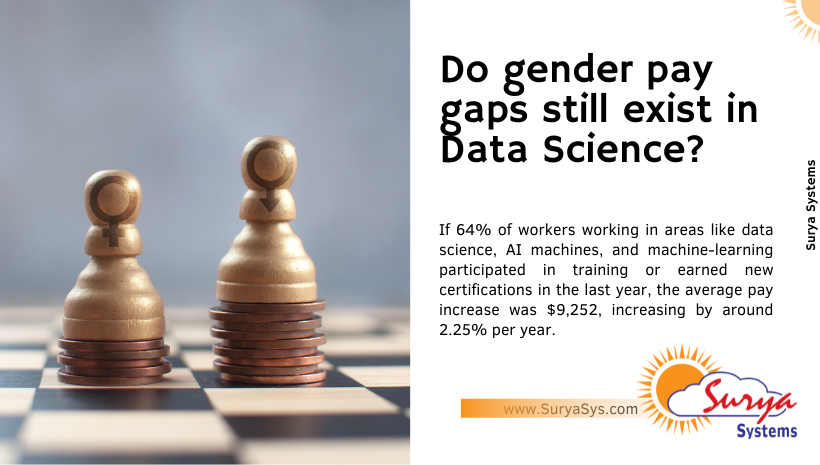- November 16, 2021
- Posted by: Sean Cooper
- Category: Technical Expertise

Upskilling in data science:
If 64% of workers working in areas like data science, AI machines, and machine-learning participated in training or earned new certifications in the last year, the average pay increase was $9,252, increasing by around 2.25 percent per year.
This is one of the findings in O’Reilly’s 2021 Data and AI Salary Survey that examined the satisfaction of employees and salaries in fields of data science that is experiencing a shortage of qualified workers.
The results show there is a strong likelihood that data scientists and AI experts are some of the most enthusiastic employees when it comes down to improving their skills — and they are eager to improve their skills.
“Given the shortage of qualified employees in fields like data science, machine learning, and AI, companies that are serious about building out their workforces must invest in learning and training to grow this talent internally,” O’Reilly president Laura Baldwin said in a statement.
“With such a wealth of knowledgeable talent and a recovering global economy hungry to fill tech roles in digital work environments, there’s never been a better time to invest in employee learning and reskilling.”
The O’Reilly survey surveyed 3,136 employees and collected the salary information by gender and educational level and job title and tools and platform knowledge. Ninety-one percent of respondents with an average salary of $146,000 annually expressed a desire to learn new skills or enhance their existing skills.
Those who took the time to study were rewarded with higher pay increases. The employees who attended one to 19 hours of training experienced an average salary increment of just $7100. According to O’Reilly, those who dedicated over 100 hours to learning benefited from an average annual pay raise of $11,000.
Data scientists who responded to the survey think that having a new set of technical skills will give them more responsibility, a boost in employability, as well as greater job security. It’s generally true; however, the salary increases in data science and the overall tech industry are contingent heavily upon gender O’Reilly found.
Women’s wages are much less than men’s, amounting to 84 percent of the average salary for males, regardless of education level or job designation. At the executive level, the median salary of women was $163,000 as opposed to $205,000 for males, O’Reilly found — 20 percent difference.
The boom in hiring:
In a June 2020 report from June 2020, LinkedIn found that the pandemic slowed the demand for AI talents from employers, as well as enthusiasm among job seekers. In the ten weeks following mid-March, hiring rates were slower, with the job number of AI jobs dropping to 4.6 percent, year-over-year, compared to 14% before the pandemic.
The market has been recovering as 81% of data science and analytics teams plan to hire during the third or fourth quarter of 2021. The U.S. Bureau of Labor Statistics estimates that the number of jobs in data science will grow by 28% by 2026.
However, salaries heavily depend on the job applicant’s preferred programming tools. Based on O’Reilly’s research, those using Rust earn the most (over $180,000 on average), followed by Go ($179,000), Scala ($178,000), and Python ($150,000).
The expertise with PyTorch ($166,000), TensorFlow ($164,000) as well as scikit-learn ($157,000) are among the top, while the highest pay was related to the H2O ($183,000), KNIME ($180,000), Spark NLP ($179,000) along with Spark MLlib ($175,000).
“Our survey reveals just how reliable data and AI professionals are to advancing their careers through skill development and training. Getting L&D right is crucial for companies to retain and attract top talent in this hot job market,” O’Reilly’s VP of content, Mike Loukides, said in a statement.
